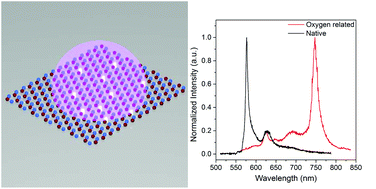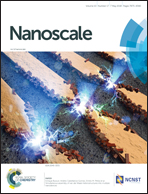Single photon emission from plasma treated 2D hexagonal boron nitride†
Abstract
Artificial atomic systems in solids are becoming increasingly important building blocks in quantum information processing and scalable quantum nanophotonic networks. Amongst numerous candidates, 2D hexagonal boron nitride has recently emerged as a promising platform hosting single photon emitters. Here, we report a number of robust plasma and thermal annealing methods for fabrication of emitters in tape-exfoliated hexagonal boron nitride (hBN) crystals. A two-step process comprising Ar plasma etching and subsequent annealing in Ar is highly robust, and yields an eight-fold increase in the concentration of emitters in hBN. The initial plasma-etching step generates emitters that suffer from blinking and bleaching, whereas the two-step process yields emitters that are photostable at room temperature with emission wavelengths greater than ∼700 nm. Density functional theory modeling suggests that the emitters might be associated with defect complexes that contain oxygen. This is further confirmed by generating the emitters via annealing hBN in air. Our findings advance the present understanding of the structure of quantum emitters in hBN and enhance the nanofabrication toolkit needed to realize integrated quantum nanophotonic circuits.



 Please wait while we load your content...
Please wait while we load your content...
